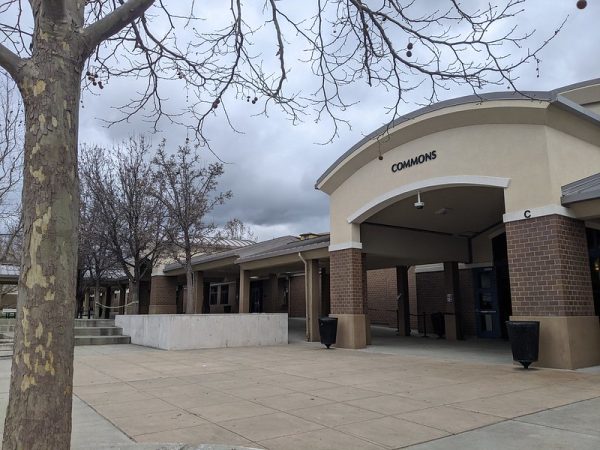Bus or UberPlus?
Uber recently announced that they will release a new subscription based plan called UberPlus in major cities, where one can take an Uber as low as $2. Uber’s new flat rate of $2 for a UberPool makes it $0.25 cheaper than a single city bus ride in San Francisco, whereas UberX will start from $7.
Uber is a San Francisco based ride-sharing company that places an emphasis on sustainability, convenience and cost-effectiveness. Today, the company is now providing ride-hailing services in 66 countries and 507 cities across the globe. Uber allows passengers to hail a car by using their smartphones, instead of hailing a traditional cab with their hand. It offers a variety of options for consumers; UberPool and UberX are the most common among the sea of other Uber options. UberPool is a service where one passenger share a car with other passengers, sometimes other passengers may have the same destination; UberX is more like a taking a traditional cab.
For the month of September, Uber is planning to release a new plan called UberPlus in the following cities: Boston, Washington D.C., Miami, San Diego, Seattle, and the home to Silicon Valley that is San Francisco. Uber is marketing this as a better way to get around the city (for UberPool anyway), unlike a bus, not only does it cost $0.25 more for a trip, it also stops more frequently for other passengers to get off at various different bus stops. In order to get the deal, one must first pay a subscription fee for either $20/month for 20 fixed-cost trips, or $30/month for 40 trips. The system is a mixture of clipper card and a bus ride pass; it starts out as $2, but if the total ride cost of a UberPool is going to be more than $20, the passenger is going to be pay the additional fees that are over $20 (for UberX, the limit is $25); surge fees won’t be included in the extra cost. When asked about this new deal, Tribune’s Photo editor, Manan Dhir responded: “I would pick Uber over a bus as long as I can afford it, as I feel Uber would be more comfortable.”. Max Chakhmatox, who is currently a Freshman at San Mateo College, commented that he “would take Uber” to show his “support for local startups.”.
Along with the new UberPlus plan, which should help the company to broaden its customer base, is the firm’s new collaboration with Volvo, Uber is looking forward to beat Lyft by first introducing autonomous cars for customers who can just enjoy their journey. Currently, Uber is the leader of the ride-hailing industry in America, beating its closest competitor, Lyft, by a huge margin, is also very much looking forward to the idea of autonomous cars with Volvo while being the forefront of it; Bloomberg news reported that Uber and Volvo have signed a pact in which both companies are going to collaboratively spend $300 Million and hoping to develop fully autonomous vehicles and that currently there are already semi-autonomous Volvo’s on the streets of Pittsburgh, “Uber’s Pittsburgh fleet, which will be supervised by humans in the driver’s seat for the time being, consists of specially modified Volvo XC90 sport-utility vehicles outfitted with dozens of sensors that use cameras, lasers, radar, and GPS receivers. Volvo Cars has so far delivered a handful of vehicles out of a total of 100 due by the end of the year.”.
There are some downsides to UberPlus. For starters, it’s only effective when the trip of the passenger’s UberPool or UberX is within the innards Downtown San Francisco, so a passenger shouldn’t expect to get this deal whenever one decide to take a Uber. Uber also hasn’t made clear about how this will affect their drivers’ pay, as Uber drivers have filed a lawsuit against Uber in the past, lowering ride fares could blow back towards Uber badly. According to Cnet, back in February, the company infuriated drivers who drive for the firm by lowering their fare prices by 15 percent around New York, more than 100 drivers were outside of Uber’s New York office, protesting to the firm’s lowered rate, as it’s a sign to them that not only are they going to receive lesser pay, but their job security is still an issue; most Uber drivers are still being classified as contractors and “have also sued to try to get the company to classify them as employees, which would force the company to foot the bill for Social Security, health insurance and other benefits.” There’s also the factor of limited spaces available for this deal, while Uber does pick out new users each month, it’s highly unlikely that many will be able to participate in the deal hence the lowered rate.
When asked about her thoughts on the new program, Senior Michelle Mu responded: “I would take bus rides over Uber, Uber is difficult in San Francisco already– not because of the fares but the transportation. It’d take much longer for the uber to get to you as well as getting to your destination. Buses, though they have a set routes that are bigger and are more difficult to cut off in a street, I think they would get around faster than smaller cars.”. Senior Sharon Sanhotra felt that she would take the bus “if it was just a one time thing”, but would consider UberPool if she often travels by public transport in Downtown San Francisco: “I mean if you travel often by public transport I’d choose UberPool.”.
This new deal should keep current Uber customers loyal to the brand, as they’ve lowered their rate and are planning to add more participating cities to this plan; Uber is also hoping to lure existing Lyft customers as Uber is trying to eliminate its sole competition in the US. Along with Volvo’s partnership to create autonomous cars for the future, the future of Uber sounds promising. But that’s the future, at the present, there are still some limitations to consider, such as limited spaces, a closed boundary, along with autonomous cars that still need more time for research and development, it could be still very hard for some to consider to switch to Uber instead of taking public transport.

This is Kingsun's second year in journalism. He joined the Tribune because he wanted to meet new people and he also wanted to train himself more on my writing skills. He wanted to write more about cars...











